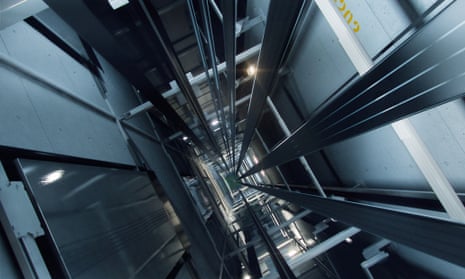We Maintain Lifts with Accuracy: Ensuring Safety And Security and Effectiveness
We Maintain Lifts with Accuracy: Ensuring Safety And Security and Effectiveness
Blog Article
Diving Into the Globe of Elevators: Common Concerns Dealt With by Various Lift Systems
As we navigate with the vertical transportation systems of contemporary buildings, elevators stand out as an indispensable element of our everyday lives. From hydraulic elevators to grip systems and machine-room-less designs, each lift type comes with its set of common problems.
Hydraulic Lifts
Hydraulic lifts, often preferred for low-rise structures, make use of fluid pressure to regulate the movement of the lift cars and truck (lift repair companies). This system involves a hydraulic pump pushing oil into a cyndrical tube, creating the lift to relocate the desired direction. While hydraulic lifts are known for their peaceful and smooth operation, they do come with their own set of usual issues
One prevalent problem with hydraulic lifts is oil leakage. In addition, problems with the control system, such as defective shutoffs or a malfunctioning pump, can cause interruptions in the lift's movement.
Regular maintenance and timely repair services are important to make certain the smooth functioning of hydraulic elevators. By dealing with these usual problems proactively, building proprietors can lessen downtime and ensure the safety and effectiveness of their upright transportation system.
Grip Elevators
When taking into consideration vertical transport systems in structures, one more usual type besides hydraulic lifts is the traction elevator. Grip lifts run using a system of ropes and counterweights that relocate the elevator automobile by clutching onto the hoist ropes. This device permits smoother and much faster vertical transportation contrasted to hydraulic systems.
One of the common concerns faced by grip lifts is rope wear. The continuous activity of the ropes within the traction system can lead to tear and wear in time, potentially triggering the lift to malfunction or end up being harmful for use. Regular assessments and upkeep of the ropes are necessary to make certain the elevator's proper performance and safety.
One more concern that traction lifts may experience is connected to the control system. Issues with the control system can cause concerns such as irregular motion, delays in reaction times, and even complete closures. Regular testing and maintenance of the control system are essential to avoid such problems and make sure the lift's integrity.
Machine-Room-Less (MRL) Lifts

Among the essential components of MRL lifts is the compact gearless grip maker that is set up within the hoistway. This machine successfully drives the lift vehicle without the requirement for large tools located in standard grip lifts. Furthermore, MRL elevators commonly make use of a weight system to balance the automobile, further improving their power performance.
In spite of their advantages, MRL lifts might face challenges connected to maintenance and repair because of the confined room for equipment setup. Access for servicing elements within the shaft can be restricted, needing specialized training for technicians. Appropriate upkeep routines and routine examinations are vital to make certain the continued smooth procedure of MRL elevators.
Overloading and Weight Limit Issues
Are lifts geared up to handle excess weight tons efficiently and securely? Straining and weight restriction concerns are essential issues in elevator operations. Elevator producers layout lifts with certain weight capabilities to make certain passenger security and equipment longevity. Exceeding these weight restrictions can result in numerous issues, including mechanical failings, delays, and security threats.
When lifts are strained, it places extreme strain on the lift companies in London electric motor, wires, and various other parts, potentially triggering malfunctions or malfunctions. Safety and security systems such as sensing units and overload sensing units are in location to stop elevators from moving if they discover excess weight. Furthermore, going beyond weight limitations can result in enhanced power consumption and deterioration on the lift disabled platform lifts prices uk system.
To minimize overwhelming issues, constructing supervisors need to plainly present weight limitations in elevators and inform passengers on the importance of sticking to these limitations - lift repair companies. Regular upkeep checks by certified technicians can additionally assist guarantee that elevators are operating within safe weight criteria. By resolving overloading and weight limit issues proactively, building proprietors can boost lift security and efficiency
Electrical System Failings
Going beyond weight limits in elevators can not just lead to mechanical issues however additionally potentially contribute to electric system failures within the lift framework. Electrical system failings are a crucial problem in lift operation, as they can cause unanticipated closures, breakdowns, or also safety dangers.
In addition, power rises or changes in the electrical supply can also disrupt the elevator's procedure, affecting its performance and safety. These electrical disturbances can harm sensitive elevator parts such as control panels, circuit boards, or sensors, causing system failures. Regular upkeep and inspections are vital to recognize and address prospective electric issues quickly, making certain the efficient and risk-free procedure of elevator systems. By sticking to weight limitations and conducting regular electric system checks, structure proprietors can reduce the we maintain lifts threat of electrical failures in elevators.
Final Thought

Hydraulic elevators, typically preferred for low-rise buildings, make use of fluid pressure to regulate the activity of the elevator auto.When thinking about upright transportation systems in structures, another usual kind aside from hydraulic elevators is the traction lift. Traction elevators run using a system of ropes and weights that relocate the lift auto by grasping onto the hoist ropes. Unlike standard elevators that require a different equipment area to house the tools, MRL lifts integrate most of the parts within the shaft, removing the need for a specialized maker space.In verdict, lifts face common concerns such as hydraulic breakdowns, traction system failures, and electrical system troubles.
Report this page